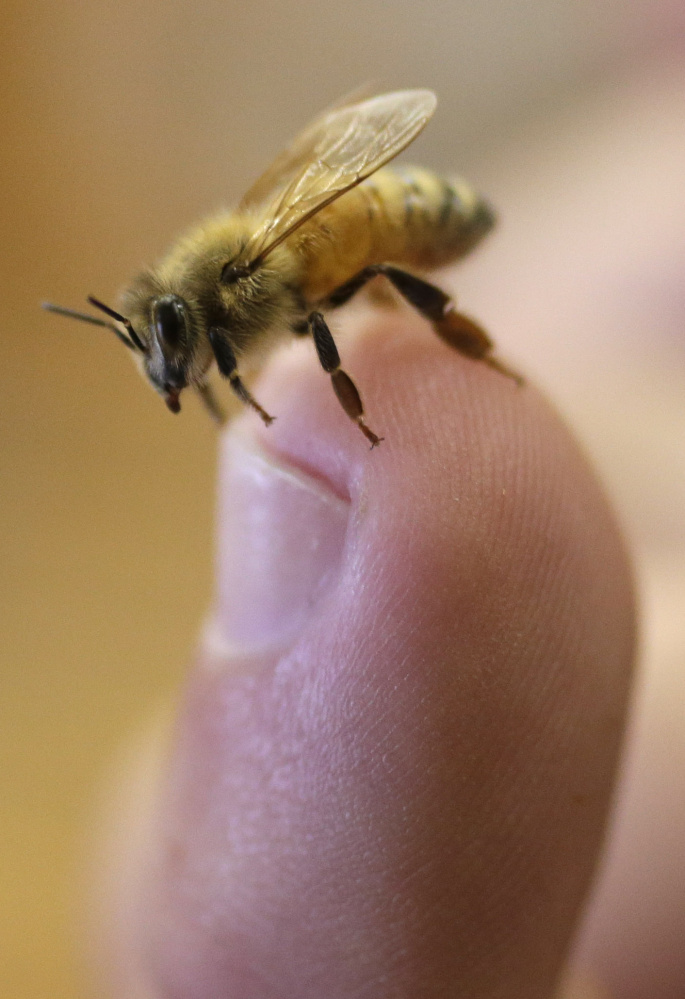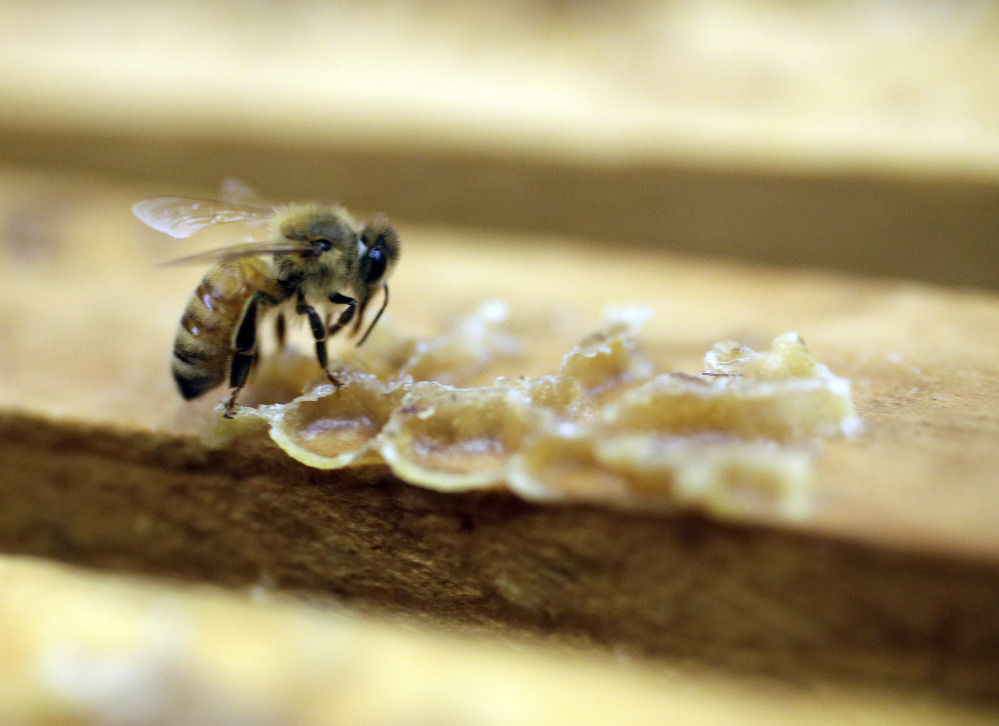WASHINGTON — A major pesticide harms honeybees when used on cotton and citrus but not on other big crops like corn, berries and tobacco, the Environmental Protection Agency found.
It’s the first scientific risk assessment of the much-debated class of pesticides called neonicotinoids and how they affect bees on a chronic long-term basis. The EPA found in some cases the chemical didn’t harm bees, but in other cases it posed a significant risk. It mostly depended on the crop, a nuanced answer that neither clears the way for an outright ban nor is a blanket go-ahead for continued use. Both the pesticide maker and anti-pesticide advocates were unhappy with report.
The issue is important because honeybees are in trouble and they do more than make honey. One-third of the human diet comes from insect-pollinated plants, and the honeybee is responsible for 80 percent of that pollination.
Some advocacy groups target neonicotinoids – the chemical works on insects’ central nervous systems – and call for bans on the chemicals.
Europe banned the pesticide class, and then lifted the ban.
Don’t expect any future action on this pesticide to solve the dwindling bee problem because it’s not just this pesticide alone, but a complicated puzzle that includes lack of food for bees, parasites, disease and the way different pesticides and fungicides interact, said bee expert May Berenbaum at the University of Illinois.
Before it acts on a pesticide, EPA wanted more targeted research. The risk report released Wednesday is the first of four on this class of chemicals.
EPA analysis of detailed tests found a clear level of concentration of the pesticide imidacloprid, the most common neonicotinoid, in which things start to go awry. If nectar brought back to the hive from worker bees had more than 25 parts per billion of the chemical, “there’s a significant effect,” namely fewer bees, less honey and “a less robust hive,” said Jim Jones, an EPA assistant administrator..
But if the nectar chemical level was below 25 parts per billion, it was as if there were no imidacloprid at all, with no ill effects, Jones said. It was a clear line of harm or no harm, he said.
Levels depended on the crop, Jones said. While nectar of cotton and citrus fruits were above the harmful concentrations, the levels were not harmful for corn – the nation’s top crop – most vegetables, berries and tobacco. Other crops need more testing, including legumes, melons, tree nuts and herbs.
Also, the controversial practice of treating seeds with the chemical seemed not to harm bees, Jones said.
Send questions/comments to the editors.




Success. Please wait for the page to reload. If the page does not reload within 5 seconds, please refresh the page.
Enter your email and password to access comments.
Hi, to comment on stories you must . This profile is in addition to your subscription and website login.
Already have a commenting profile? .
Invalid username/password.
Please check your email to confirm and complete your registration.
Only subscribers are eligible to post comments. Please subscribe or login first for digital access. Here’s why.
Use the form below to reset your password. When you've submitted your account email, we will send an email with a reset code.